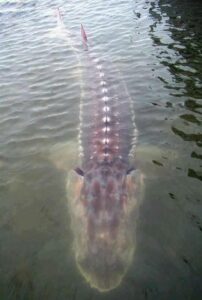The Okanagan's Lake Monster
Ogopogo
Is it real? If it is, what is it?
Celebrate the magic of N’ha-a-itk
(sacred spirit of the lake a.k.a. Ogopogo )
Worlds most credible sea serpent & North America’s most famous sea serpent.
Ogopogo has been seen in lake Okanagan for thousands of years, first by the indigenous peoples when it was known as the N’ha-a-itk lake monster, and since 1872 by those of western culture.
You can capture the magic
Come see for yourself! Ogopogo lives across lake Okanagan from Peachland in a cave more than 700 feet below water level, by rattlesnake island and squally point.
Ogopogo myth or real?
People living around lake Okanagan have kept one eye on the lake since they were kids hoping to see Ogopogo! Many have claimed to have seen it, some more than once.
Many sightings have been attributed to being beavers or a large fish/snake, water anomalies or other explainable events. Some say Ogopogo is but a native legend, a water spirit kept alive for lessons to be learned from storytelling.
Scotland’s Loch Ness may have the same infamy as far as lake monsters go, but for many monster searchers (cryptozoologist) Ogopogo is the most likely and best documented of all lake monsters.
The catalogue of films and video of Ogopogo are numerous and good quality, several of which are very persuasive that a large living unknown creature inhabits the lake. (John Kirk BC scientific cryptozoology club) The 1968 Folden and 1980 Tahl films are the best examples.
First Nations legends of N’ha-a-itk
There are dozens of repeated lake monsters/sea serpents around the world, but what makes Ogopogo especially interesting, is its previous incarnation in Canadian first nation legends. It is described as a ferocious sea serpent called N’ha-a-itk that would command an animal sacrifice from travelers for safe passage across Lake Okanagan hundreds of years ago. Whenever First Nations’ would venture into the lake, they brought chickens or other small animals to drop into the water to assure a safe journey.
As with most First Nations’ legends there is a lesson within.
According to Westbank First Nation;
“N’ha-a-itk is a metaphor for sustainability and a good topic to express our connection to the land.
The meaning of N’ha-a-itk is secret spirit of the lake not like a demon or monster.
If N’ha-a-itk disappears due to pollution and miss-use of the water, so too do the plants, medicine trees, and foods that sustain us.
For this reason Westbank First Nation embraces N’ha-a-itk and features it on their logo as an important figure in their history and connection to the land.
N’ha-a-itk & the Syilx people call visitors to respect the lake as a source of water, because water is life.
What does Ogopogo look like
The most common description among many hundreds of sightings is a 40 to 60 foot beast, perhaps with horns. It may have smooth dark green/black skin or some scales with a saw tooth back, and a head resembling one of a horse/snake/sheep or alligator. One WFN sighting from several generations ago described a horse-like head with antlers and hair; much like the local postage stamp.
What could it be?
Some believe Ogopogo can be explained as a kind of prehistoric water dinosaur left over from the Ice Age (Plesiosaur). The description of a long neck, with small heads and long tails fits a Plesiosaur nicely. It would have been trapped when glaciers melted and brought here when the glaciers gouged out Okanagan Lake.
Some say Ogopogo is a primitive whale. Basilosaurus cetoides fits the bill in this case; its features echoing the log-like Ogopogo at rest.

Still others say Ogopogo is simply a massive Sturgeon! (Most believable in modern times).

Lastly, there are those that say Ogopogo and Nessie are the same type of creature and can travel to see each other through underground waterways.
In any case the more credible sightings of Ogopogo have been documented in books written by Mary Moon and Arlene gaal, and on the website Ogopogo quest authored by Bill Steciuk.





